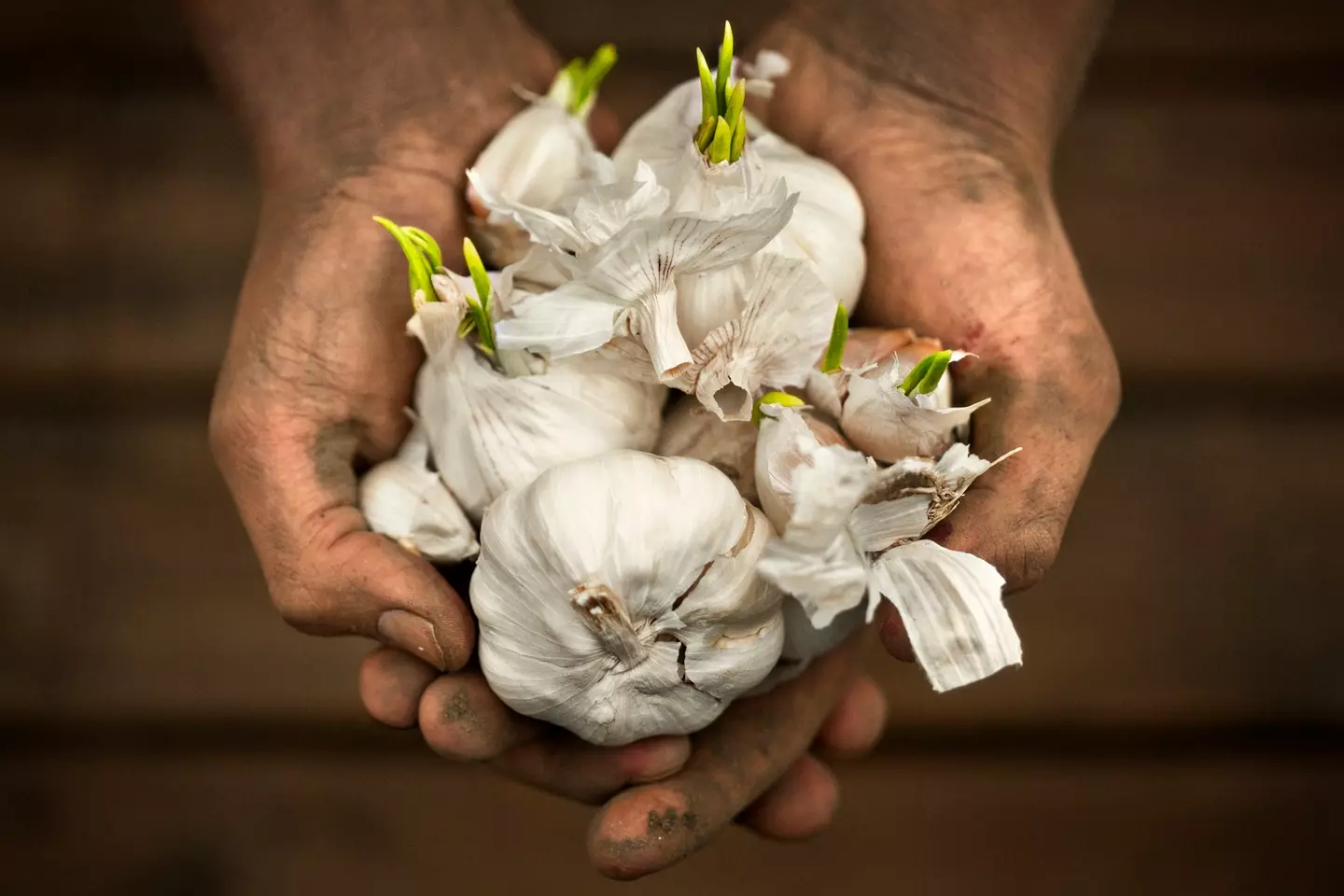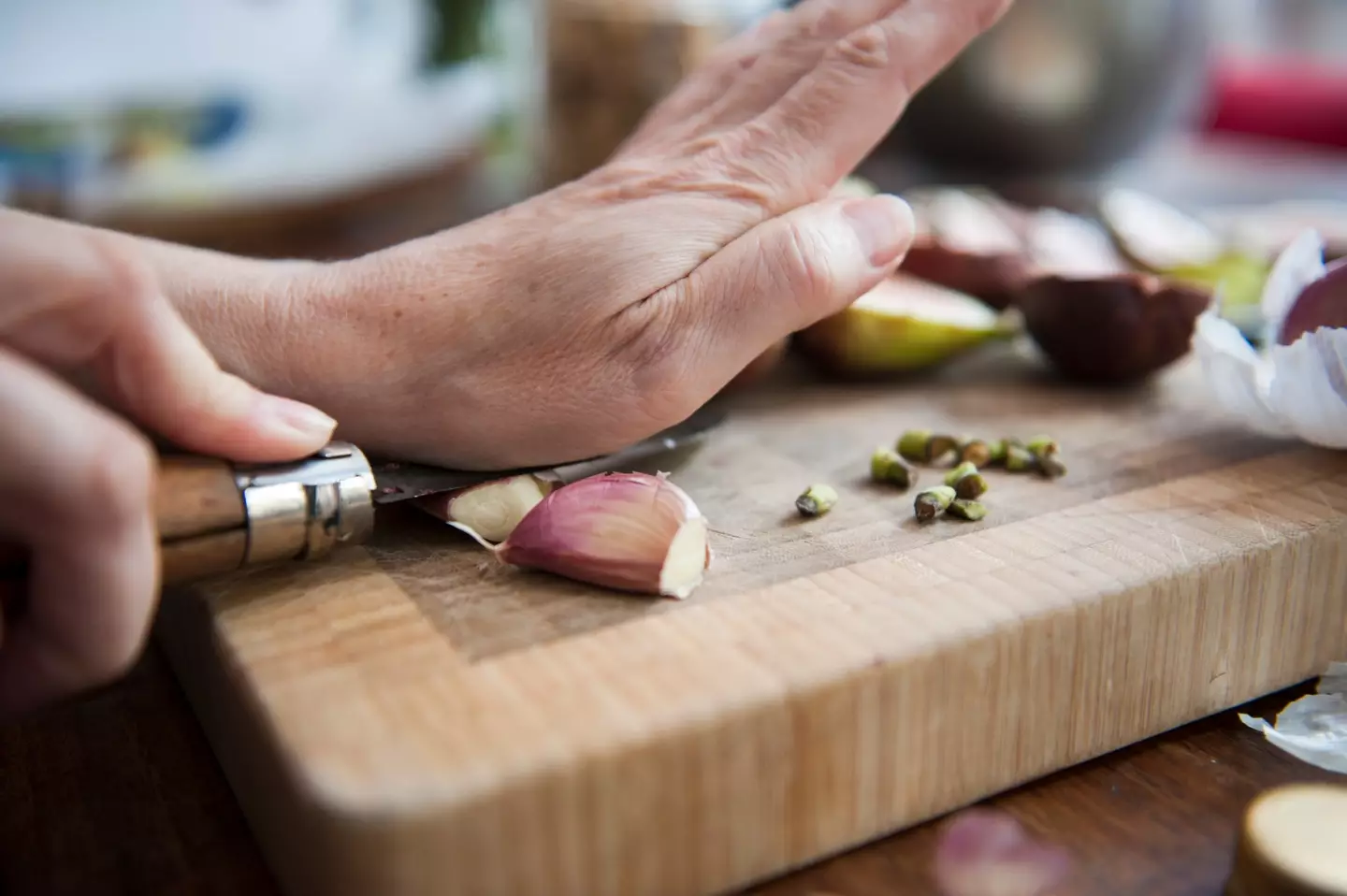
Garlic is something of a miracle ingredient. You wouldn’t want to eat it raw, unless you’re doing some kind of nasty social media challenge, but it’s got a remarkable ability to draw out the flavours in a dish whilst also adding its own earthy tang.
It comes in a few common varieties, with those being white or purple-streaked.
The purple bulbs are known as ‘hardneck’ garlic because they have a stiff stem running through the centre, and their skin is generally crunchier than the white ‘softneck’ variety.

Advert
With cloves growing around the woody stem, purple garlic cloves are often larger and more uniform in side and shape than their white cousins. They’re also typically more flavoursome, with a more mild and sweet palate than the white ones, but it’s a marginal difference.
Now, why a woody stem is to be expected, a fresh, green-tipped sprout is a sign your garlic may be past its best.
It’s still safe to cook and eat with, and it has a higher concentration of antioxidants than non-sprouted garlic, but there are some things to bear in mind if you’re planning to cook a sprouted garlic.
Of course, it’s just your garlic trying to start the next growth cycle and potentially lay the groundwork for its own bulby offspring, but the flavour profile can be a bit different.
Advert
Per Elisa Pietrantonio, the senior food editor at Taste, an aged or budding garlic is best used in particular dishes rather than being seen as the all-rounder ingredient that garlic is typically seen as.
"In dishes where garlic is the main attraction, fresh cloves are best," said Pietrantonio, according to the Express.
"Save your sprouted garlic for dishes that are cooked well and where garlic is used as a mild flavour enhancer."
In other words, if it’s a central flavour or the menu asks for more than a bulb’s worth, you might be better off nipping to the shop for a fresher bulb.
Advert
While some say there’s a bitter quality to sprouted garlic, some say it’s more of a grass-like quality it can bring to a dish. If you’ve ever tried eating grass, for whatever reason, you’ll know it’s bitter in and of itself, so…

Anyway, if you want to help slow down your garlic’s ageing process, it’s best kept in a cool, dry place between 15 and 20 degrees C.
And here’s a helpful tip: if you want to draw back on your garlic’s bitterness, especially if it’s sprouted, you can cut the core out of your cloves. It’s a little bit fiddly but it’s satisfying to do. Simply cut your clove in half lengthwise, then dig out the core in each half.
